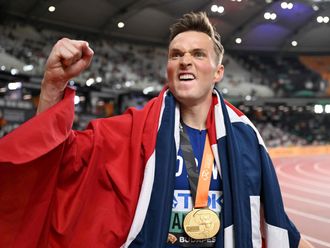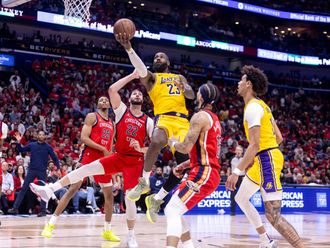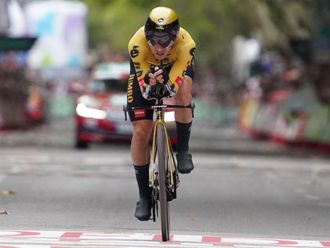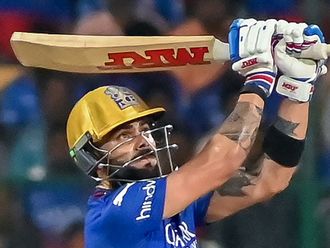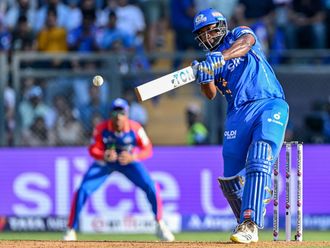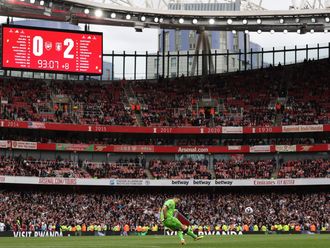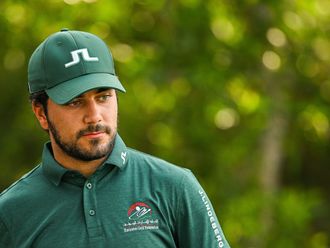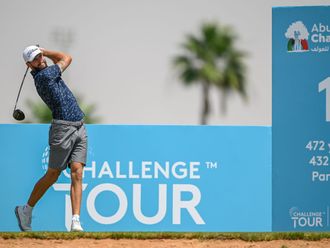Hamilton: The America’s Cup brings a breathtaking blend of space-age technology and sailing tradition to Bermuda on Friday, when five would-be challengers begin their battle for the right to take on America’s Oracle for global sport’s oldest trophy.
The latest generation of America’s Cup catamarans — 50 feet (15.24m) in length with towering, 78-foot fixed-wing sails — will reach speeds of more than 50 miles per hour (80.47 Km/h) as they rise above the waters of Bermuda’s Great Sound, virtually flying on their hydrofoils in a spectacle likened to Formula One on water.
“It’s just the pinnacle of what we can imagine,” Oracle coach Philippe Presti told AFP of a competition that brings together “the most competent and talented people of their generation.”
Oracle, the US syndicate backed by technology titan Larry Ellison and led by skipper Jimmy Spithill, will be going for a “three-peat” after victories in 2010 and 2013.
Their challenger will emerge from the Louis Vuitton America’s Cup Qualifiers that start on Friday and continue through June 12.
Australian Glenn Ashby skippers Emirates Team New Zealand. Ben Ainslie — who played a key role as tactician in Oracle’s stunning comeback victory over Team New Zealand in 2013 — leads Land Rover BAR and aims to take the “Auld Mug” back to Britain for the first time since the inaugural edition of the competition around the Isle of Wight in 1851.
SoftBank Team Japan — the country’s first entry since 2000 — boasts plenty of experience in veteran helmsman Dean Barker of New Zealand — who won the Cup in 2000.
Japanese sailing star Kazuhiko Sofuku is the general manager and bowman of the syndicate vying to become the first Japanese team to claim the Cup.
Sweden’s Artemis Racing is skippered by Australian Nathan Outteridge, with Britain’s two-time Olympic champion Iain Percy serving as team manager and tactician.
Groupama Team France — another newcomer — is led by renowned round-the-world sailor Franck Cammas and opens the action on Friday against Team USA.
All six teams take part in round-robin qualifying, with four advancing to the Challenger Playoffs to fight for a chance to take on Team USA beginning on June 17.
“No one is going to walk away with it,” Team USA tactician Tom Slingsby told americascup.com.
‘It’s very gladiatorial’
This generation of America’s Cup catamarans — smaller and more manoeuverable than the 72-foot craft that debuted in 2013 in San Francisco — could foil all the way around the course to make for a stunning spectacle for crowds watching from the shore.
Among the innovations this year, Team New Zealand is using a cycling-type pedal system instead of arm grinders to power their hydraulics.
Amid all the technological advances, Spithill says, the physical and mental demands on the sailors “have gone up exponentially.”
The fierce competitiveness of the match-race format, however, hasn’t changed.
“It’s very gladiatorial between the teams,” says Ainslie, who has already drawn fire after “clipping” Team New Zealand in pre-start maneuvers during practice racing this month.
BAR team manager Jono Macbeth — a three-time America’s Cup winner — said pushing the limits, technologically and tactically, is what the America’s Cup is all about.
“I think what we’ve got here is a collective group of the best crews in the world, who are all incredibly competitive people and when you stick them on a race course they’re all there to win,” Macbeth told americascup.com.
“It’s going to be exciting and that’s why people want to watch it.”


